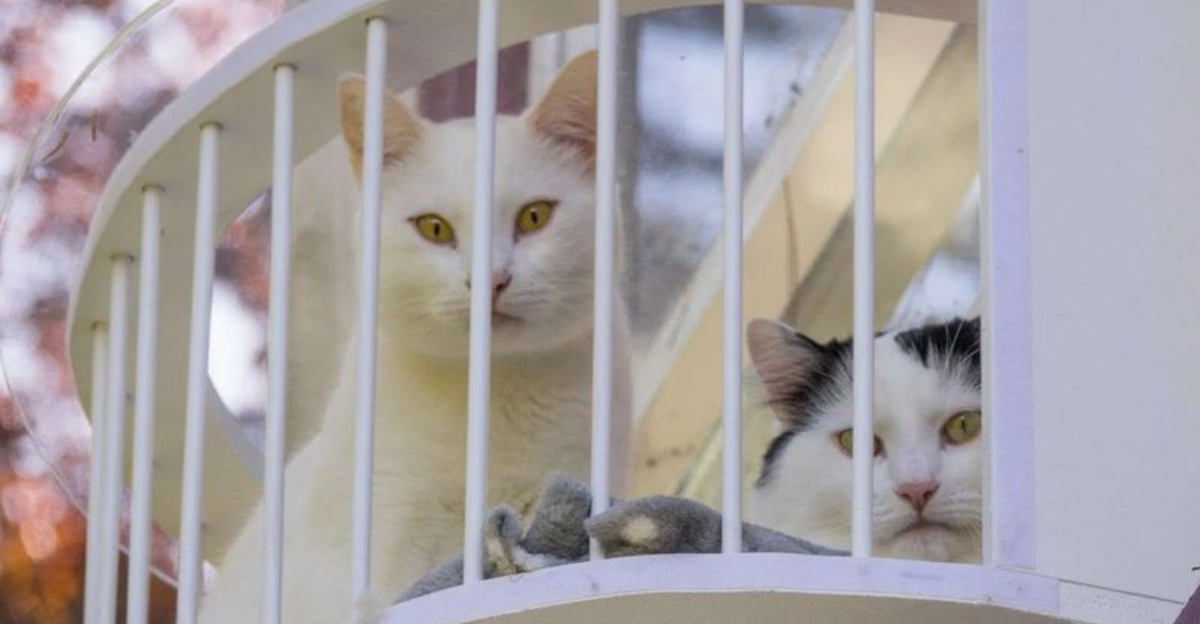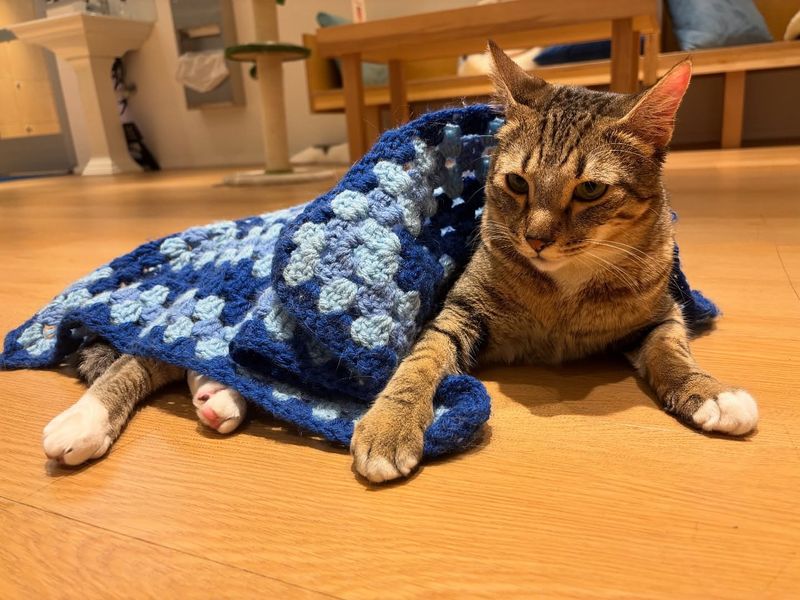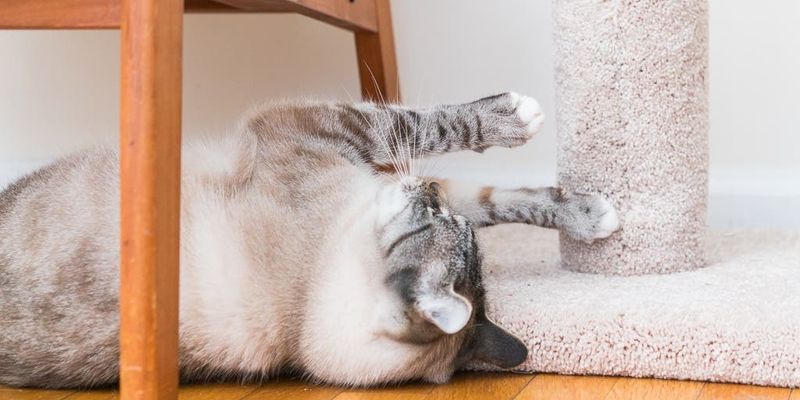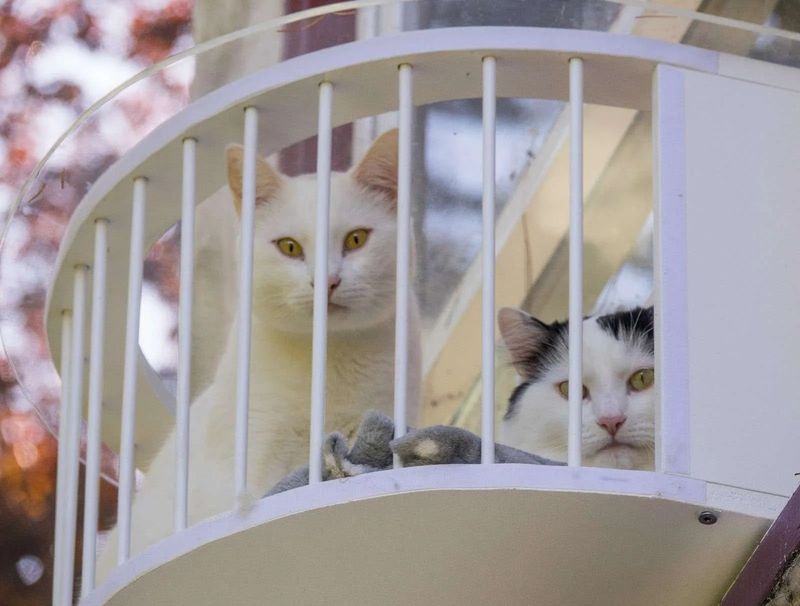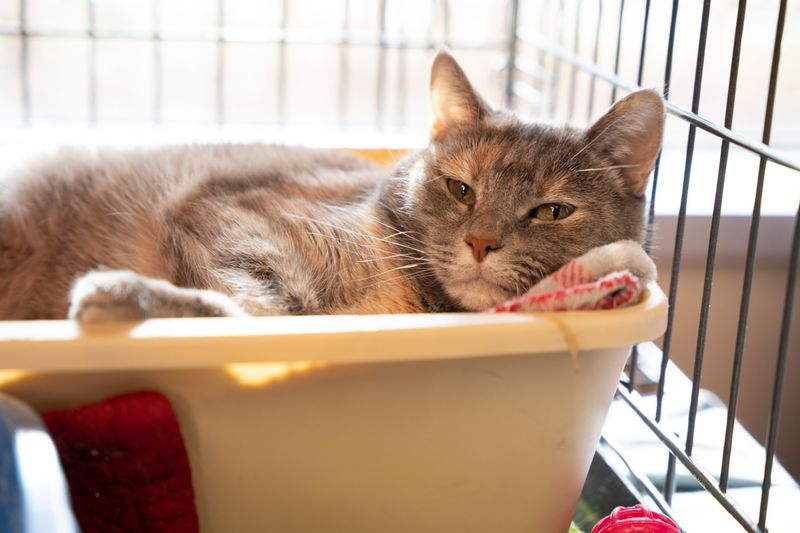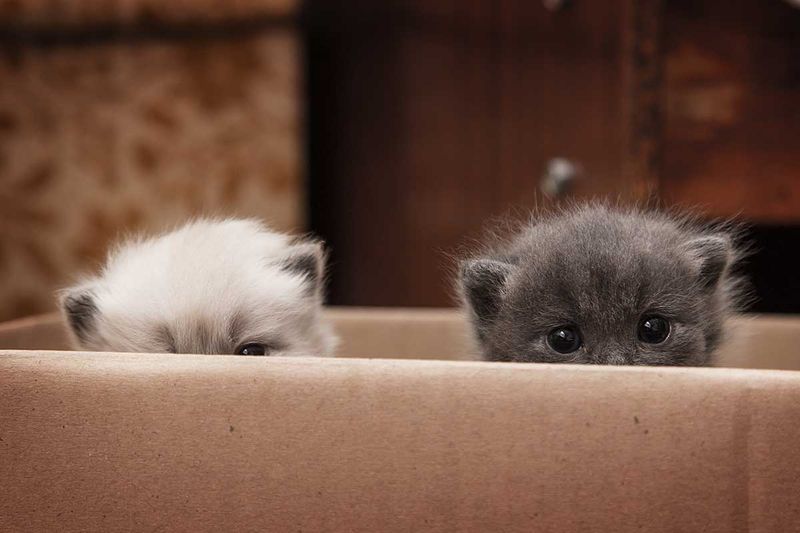📖 Table of Content:
Millions of cats wait in shelters each year for their forever homes. While not everyone can adopt, there are simple ways to improve these feline friends’ lives during their shelter stay. These small acts of kindness can dramatically boost a cat’s physical and emotional well-being, making them happier, healthier, and more adoptable.
1. Cozy Blankets and Bedding
Soft blankets transform cold shelter cages into comforting sanctuaries. Many cats arrive at shelters traumatized and frightened, and a simple piece of fabric can provide both warmth and security. The familiar scent that builds up on their bedding helps cats feel safe in an otherwise strange environment.
Shelter staff report that cats with personal bedding display fewer stress behaviors like hiding or refusing to eat. Even worn-out blankets from home can find a new purpose at shelters. Old t-shirts work wonderfully too, as the human scent helps socialize cats who need extra comfort during their transition period.
2. Interactive Toys
Boredom strikes hard in shelter environments. Cats naturally need mental stimulation and physical activity, which simple toys can provide instantly. Wand toys, crinkle balls, and puzzle feeders keep their hunting instincts sharp. Regular play sessions prevent depression and obesity while showcasing their personalities to potential adopters.
Staff often notice that cats who play regularly appear more vibrant and engaged during meet-and-greets with families. Homemade toys work beautifully too! Paper bags, cardboard boxes with holes cut out, or even bottle caps can become treasured playthings for cats awaiting their forever homes.
3. Scratch Posts and Pads
Scratching is essential for feline well-being, not just a destructive habit. Cats need to stretch their bodies, exercise their muscles, and maintain claw health through regular scratching. In shelters, appropriate scratching surfaces prevent stress-related behaviors and help cats maintain their natural routines.
Sisal posts, cardboard scratchers, or even carpet remnants mounted to boards provide this crucial outlet. When cats have proper scratching opportunities, they’re less likely to develop problematic behaviors that might make them less adoptable. Plus, adopters love seeing cats using appropriate scratching surfaces rather than furniture or cage bars.
4. Quiet Reading Sessions
Reading aloud to shelter cats might sound unusual, but it works wonders for socialization. The gentle human voice familiarizes cats with people without the pressure of direct interaction. Volunteers who sit quietly reading near shy cats help them gradually build confidence around humans.
The consistent, non-threatening presence teaches fearful felines that people can be safe companions. Many shelters now run formal reading programs where children practice reading skills while helping cats. These sessions create a peaceful atmosphere in otherwise noisy shelter environments and help cats learn to associate humans with calm, positive experiences.
5. Window Perches
Cats are natural observers who thrive on environmental stimulation. A simple window perch transforms their shelter experience by providing entertainment and reducing boredom. Watching birds, insects, and passing people gives cats mental enrichment they desperately need.
Sunny spots also offer warmth and comfort that many shelter cats crave after difficult experiences. Staff report that cats with window access display fewer signs of depression and stress-related behaviors. Even in communal rooms without individual cages, creating multiple elevated perches near windows prevents territorial conflicts while giving each cat access to this simple pleasure.
6. Consistent Handling Routines
Routine brings comfort in chaotic shelter environments. Cats thrive when they can predict when feeding, cleaning, and social interaction will happen each day. Volunteers who commit to regular schedules make an enormous difference for shelter cats.
The familiar face and touch at the same time daily builds trust that carries over to interactions with potential adopters. Something as simple as a gentle two-minute petting session at the same time each day helps anxious cats blossom. Shelter workers notice that cats with consistent handling routines recover faster from trauma and show their true personalities sooner, significantly improving their adoption chances.
7. Hiding Spots
Shelter environments overwhelm many cats with unfamiliar sights, sounds, and smells. A simple cardboard box, paper bag, or commercial cat den provides crucial psychological comfort during stressful times. Cats naturally seek enclosed spaces when feeling threatened.
Having a dedicated hiding spot gives them control over their environment and reduces stress hormones that can lead to illness. Contrary to what some might think, hiding spots actually improve adoption rates. Cats who can retreat when needed show less defensive behavior overall and feel secure enough to display their friendly personalities when they choose to emerge and interact with potential adopters.
8. Grooming Assistance
Regular brushing sessions benefit shelter cats physically and emotionally. Many cats arrive with matted fur or poor coat condition, and gentle grooming improves their comfort immediately. Beyond the physical benefits, grooming builds trust between cats and caregivers.
The rhythmic motion of brushing mimics maternal grooming, creating positive associations with human touch for cats who may have had limited or negative experiences with people. Potential adopters notice well-groomed cats more readily. A shiny coat signals health and care, making cats more appealing during adoption visits. Even five minutes of brushing weekly can transform both a cat’s appearance and their receptiveness to human interaction.
9. Calming Pheromone Products
Synthetic feline pheromones work like invisible comfort blankets for stressed shelter cats. Products like Feliway mimic the natural facial pheromones cats release when they feel safe and secure in their territory. These simple plug-in diffusers or sprays can dramatically reduce stress behaviors like hiding, aggression, or inappropriate elimination.
Many shelters report seeing positive changes within days of introducing pheromone products to their cat areas. For cats who have experienced trauma or those struggling with the shelter environment, these products provide chemical reassurance that their space is safe. The effect can be particularly helpful during high-stress periods like intake or when the shelter is especially busy with visitors.
